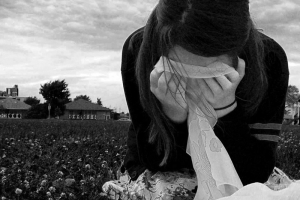Report Urges Response to Psychosocial Needs of Children in Wake of Disasters
September 29, 2015- Research
Disasters take a unique toll on children, with potential to cause short- and long-term damage to their health and development. In a new clinical report, the American Academy of Pediatrics (AAP) urges pediatricians to look for common adjustment problems in children following a disaster or crisis and to promote effective coping strategies to ease the impact of the event.
The report, "Providing Psychosocial Support to Children and Families in the Aftermath of Disasters and Crises," published in the October 2015 issue of Pediatrics (published online September 14), stresses the importance of ensuring basic support services, psychological first aid and professional self-care while working with patients and families in the wake of disaster.
"Disasters touch the lives of millions of children every year, and children are especially vulnerable to the after-effects of these events," said USC School of Social Work Professor of Practice David J. Schonfeld, lead author of the clinical report. "As pediatricians, we are in an excellent position to detect and address a breadth of problems following a disaster, as well as to counsel families and communities on how to be prepared for a crisis situation."
Disaster-related adjustment difficulties are a significant pediatric public health issue, according to the AAP. Nearly 14 percent of U.S. children between the ages of 2 and 17 have been exposed to a disaster, with more than 4 percent of the disasters occurring in the past year. These include natural disasters such as earthquakes, hurricanes, tornadoes, fires, floods, pandemics or other disease outbreaks; and human-made disasters such as industrial accidents, war or terrorism.
In a community that has experienced a disaster, research shows a large proportion of children will have trouble adjusting – yet most will have no outward symptoms. Children suffering from significant post-traumatic stress and even post-traumatic stress disorder (PTSD) several months after the event may go undetected unless pediatricians ask about symptoms.
Common symptoms of adjustment reactions in children after a disaster include:
- Sleep problems: difficulty falling or staying asleep, having nightmares or frequent night awakenings, difficulty waking up in the morning.
- Eating problems: loss of appetite or increased eating. Sadness or depression, possibly including a reluctance to engage in previously enjoyed activities or withdrawal from peers and adults.
- Anxiety, worries or fears: children may be concerned about a repetition of the traumatic event. For example, they may become frightened during storms after a tornado. They also may show an increase in unrelated fears, such as a newly developed fear of the dark or separation anxiety.
- Difficulties in concentration: a disruption in the ability to learn and retain new information or otherwise progress academically.
- Somatization: children with adjustment difficulties may present instead with physical symptoms suggesting a physical condition.
- Developmental or social regression: children (and adults) may become less patient or tolerant of change, revert to bedwetting, or become irritable and disruptive.
- Substance abuse: new onset or worsening of alcohol, tobacco or other substance use may be seen in children, adolescents and adults after a disaster.
- Risk-taking behavior: increased sexual behavior or other risk-taking can occur, especially among older children and adolescents.
Family members who notice these symptoms in children after a disaster are encouraged to discuss it with their child's pediatrician. Pediatricians also should be aware that disasters often initiate a cascade of secondary losses and stressors for children such as loss of home or personal belongings, financial and marital stress, parental mental health problems, domestic violence and child abuse. When deaths have occurred as a result of the disaster, children and family members may also be grieving. These problems require a holistic approach to help children cope and to promoting resiliency among children and families after a disaster, according to the AAP.
The clinical report is the latest in a series of resources developed by the AAP to prepare pediatricians addressing the needs of children during times of crisis.
"Especially as we mark the tenth anniversary of Hurricane Katrina, which showed the medical profession to be under-prepared for the rippling effects of disaster, it is crucial that we are fully ready to protect and heal children in the face of traumatic events," said AAP President Sandra Hassink.
Additional AAP resources are available at www.aap.org/disasters, including a Pediatric Preparedness Resource Kit and Preparedness Checklist for Pediatric Practices.
To reference the work of our faculty online, we ask that you directly quote their work where possible and attribute it to "FACULTY NAME, a professor in the USC Suzanne Dworak-Peck School of Social Work” (LINK: https://dworakpeck.usc.edu)
